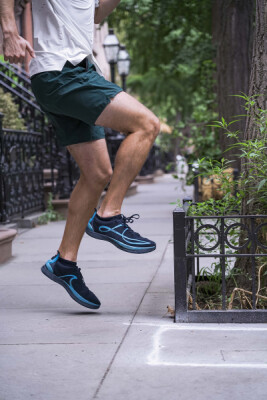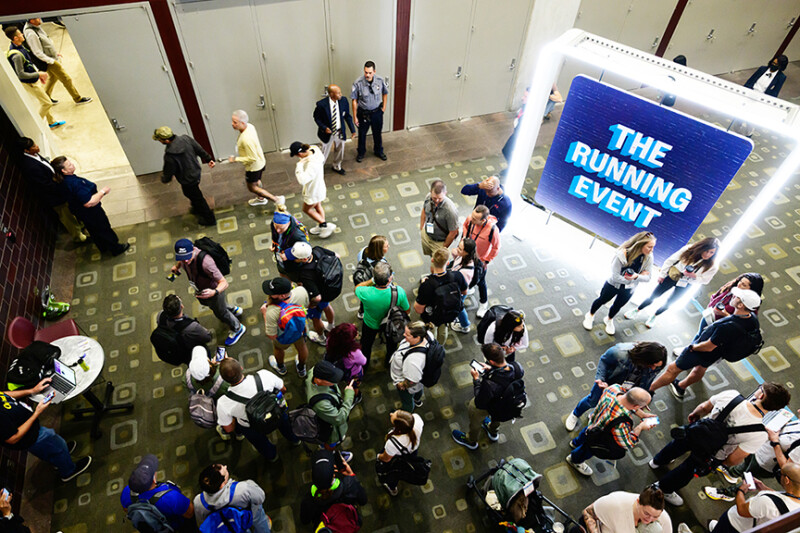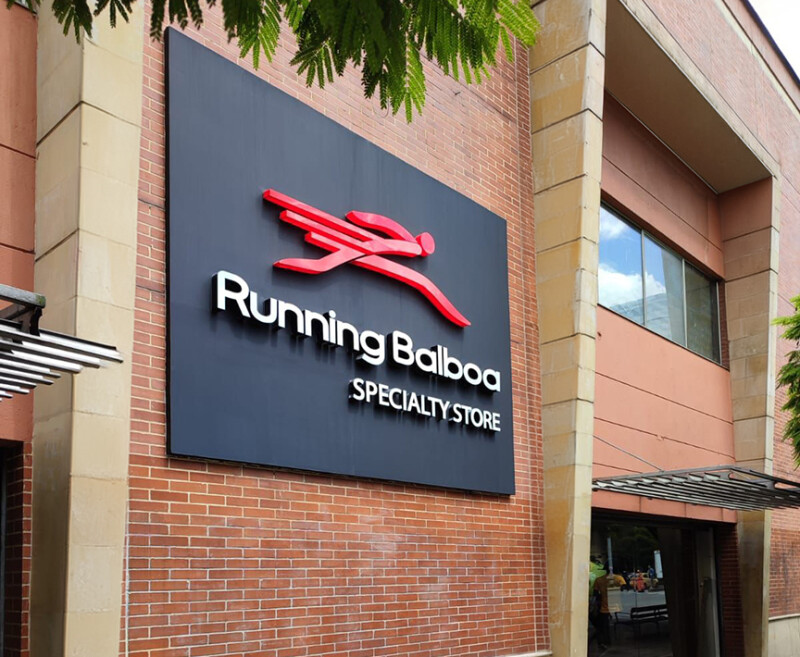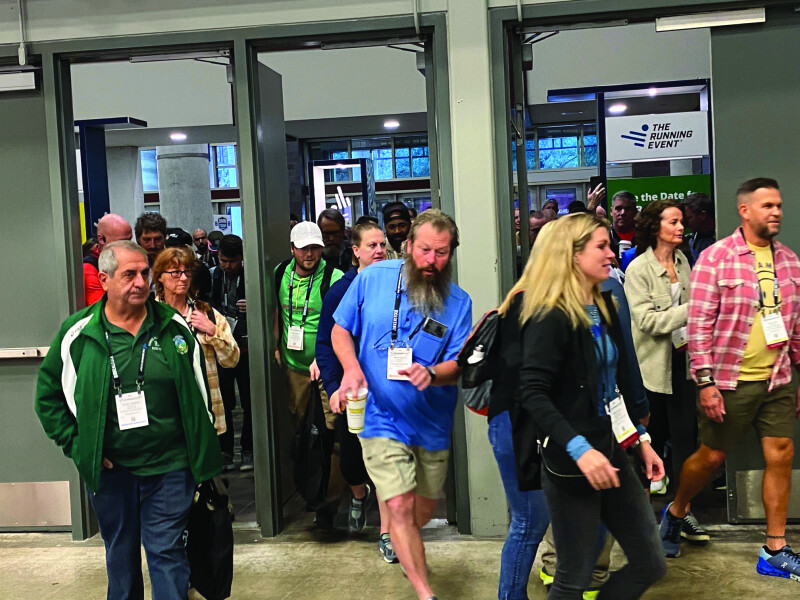By Shah Behnamian, Owner of Antepes Performance Acceleration Footwear, and Podiatrist Dr. Ben Pearl, DPM, of Arlington Foot & Ankle
Running a marathon is often seen as the pinnacle of fitness, yet for many it doesn’t translate to long-term health benefits. Shockingly, the majority of marathon runners fail to see sustained improvements in their overall health due to injuries, burnout or imbalanced training. Knowing what to do about it – and having the ability to communicate that with their customers – is an important role run specialty retailers can play.
The lack of a holistic approach to functional performance, injury prevention and recovery is a primary cause of injury among post-collegiate athletes. By integrating less common exercises into daily routines, athletes can significantly enhance functional performance, reduce injury risk, and optimize recovery for sustainable athletic success.
Injury can derail even the most dedicated athletes, impacting both performance and quality of life. This article explores how bridging the three pillars – functional performance, injury prevention and recovery – creates a sustainable approach to achieving peak performance and longevity in physical activity.
Understanding the Three Pillars
1. Functional Performance
Functional performance training focuses on strength, mobility and movement patterns that translate to real-world or sport-specific tasks. Unlike training for aesthetics (e.g., building muscle mass for appearance), functional training prioritizes practical outcomes, such as improving sprinting power, whole body health or rehabilitating a previously injured muscle, tendon or ligament. For example, a runner might focus on plyometric exercises that enhance stride efficiency and push-off power rather than just building larger quadriceps.
2. Injury Prevention
Injury prevention involves proactive strategies to minimize risks, such as proper warm-ups, mobility work and balanced training programs. Common causes of injury include overuse, poor form and inadequate recovery, often exacerbated by neglecting underutilized muscles. For instance, repetitive stress from running without proper glute activation can lead to knee or hip injuries. A comprehensive approach to injury prevention ensures all muscle groups are engaged and addressed to prevent imbalances.
3. Recovery
Recovery encompasses physical and mental restoration through rest, nutrition and active recovery techniques such as low-intensity exercises or massaging affected muscles. It plays a critical role in repairing tissues, reducing fatigue and preparing the body for future performance. Without adequate recovery, even the most rigorous training can lead to diminished returns.
The Gap Between the Pillars
Many athletes overemphasize performance and neglect recovery or injury prevention. This imbalance often stems from a lack of individualized training plans tailored to an athlete’s unique needs or from outdated practices, such as skipping warm-ups, ignoring mobility work or recovery. Additionally, coaches and athletes sometimes spread misinformation by prioritizing heavy lifting over functional movement, further widening this gap.
The consequences of neglecting these pillars are significant: increased injury risk, burnout and performance plateaus. For example, an athlete pushing for personal records without proper recovery may experience burnout or sustain an injury, such as shin splints or tendonitis, derailing their progress.
Bridging the Gap: Strategies for Integration
To bridge the gap, training programs should incorporate functional movements such as squats, lunges and rotational exercises that mimic sport-specific demands. Balancing strength, mobility and flexibility ensures athletes build resilience while enhancing performance. For instance, a basketball player might include lateral lunges to improve agility on the court.
Dynamic warm-ups and pre-habilitation exercises, such as glute activation or core stability drills, are essential for injury prevention. Tools like the functional movement screening devices can identify weaknesses or imbalances, allowing athletes to address them before they lead to injury. Additionally, using a shoe rotation, including performance-enhancing footwear, activates varied lower leg muscles and reduces the risk of overuse injuries.
Recovery should be as intentional as training. Active recovery techniques, such as foam rolling, stretching or low-intensity cardio, promote circulation and reduce muscle soreness. Adequate sleep and proper nutrition, particularly protein for muscle repair, are non-negotiable. Techniques like contrast therapy (alternating hot and cold treatments) or massage can further enhance recovery.
Every athlete is unique and training programs should reflect individual needs based on age, sport and injury history. Wearable technology, such as fitness trackers, can monitor performance, recovery and fatigue, providing data to optimize routines. Regular check-ins with coaches or physical therapists ensure adjustments are made as needed.
Real-World Applications
We have undertaken a number of case studies to address these issues in real-world situations.
· Plantar Fasciitis: In multiple cases at Dr. Pearl’s clinic in Virginia, patients incorporating strengthening footwear, such as Antepes shoes, and performing semi-daily intrinsic foot exercises recovered faster than those relying solely on rest or traditional treatments. In one case, a woman who previously suffered from plantar fasciitis trained with these types of shoes and was able to walk 75 miles of the el Camino trail after only six weeks of a serious plantar fascia injury. These shoes and other tools were able to strengthen the foot’s arch and reduce strain on the plantar fascia.
· Lower Back Pain: In another case, a patient reduced their lower back pain by correcting their anterior pelvic tilt. Standing for long periods of time, performing activities without proper form or genetic imbalance may be reasons for an anterior pelvic tilt which can lead to lower back pain. And statistically more women suffer from an anterior pelvic tilt than men, which may partially be due to wearing high heeled shoes. Corrective footwear with a negative heel-to-toe drop forces a pull and stretch in the posterior kinetic chain. This pull and stretch can rotate the pelvis into its natural form and eliminate or reduce lower back pain.
· Toe Walkers: In the case of a child who walks on his toes, interventions like ankle-foot orthoses that encourage dorsiflexion to lengthen the calf and Achilles have been implemented. The dorsiflexion promotes eccentric loading and stretching of the lower musculature, which may help correct one’s gait over time in addition to improving strength and elasticity in the lower leg and the posterior kinetic chain.
The Bottom Line
Integrating functional performance training, injury prevention and recovery creates a sustainable path to athletic success and run specialty retailers can play an important role in that process.
By training kinetic chains; targeting underutilized muscles, tendons and ligaments; and prioritizing recovery through massage and low-intensity stimulation, athletes can achieve peak performance while minimizing setbacks. Start by assessing a current routine and making one small change, such as adding a dynamic warm-up or prioritizing sleep.
About the authors
Shah Behnamian is owner of Antepes Performance Acceleration Footwear. Dr. Ben Pearl, is a podiatrist and DPM, of Arlington Foot & Ankle.






